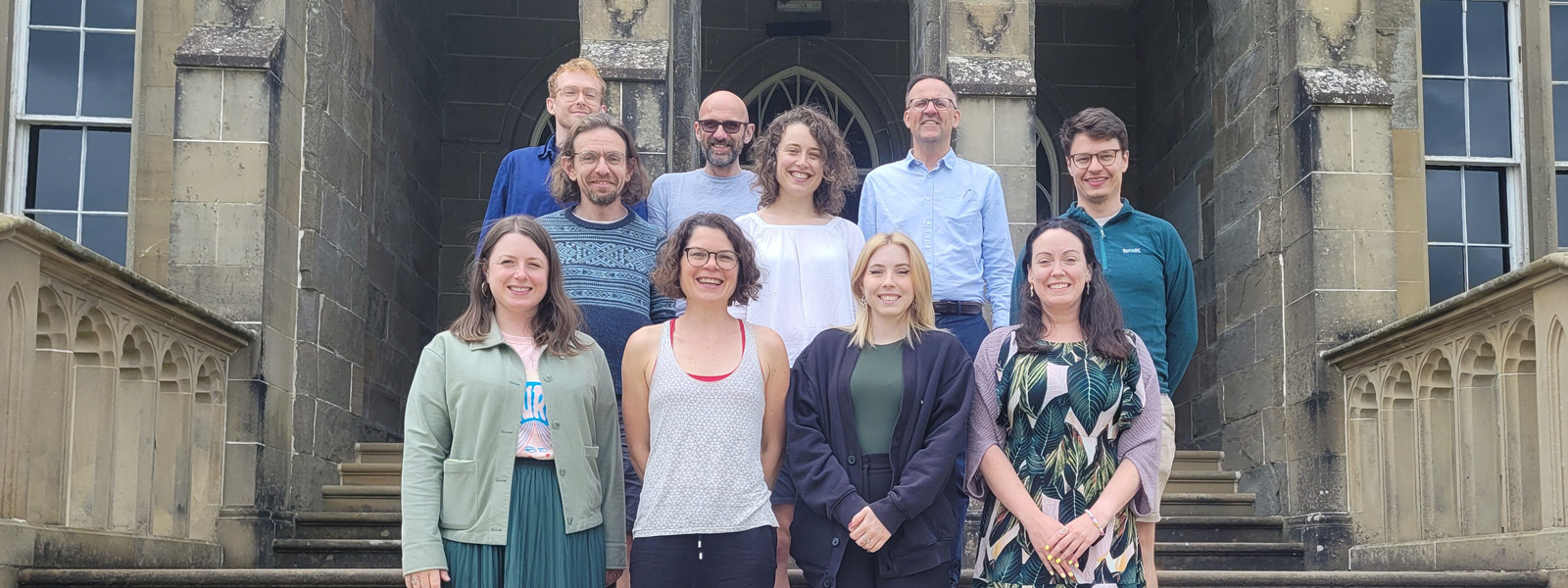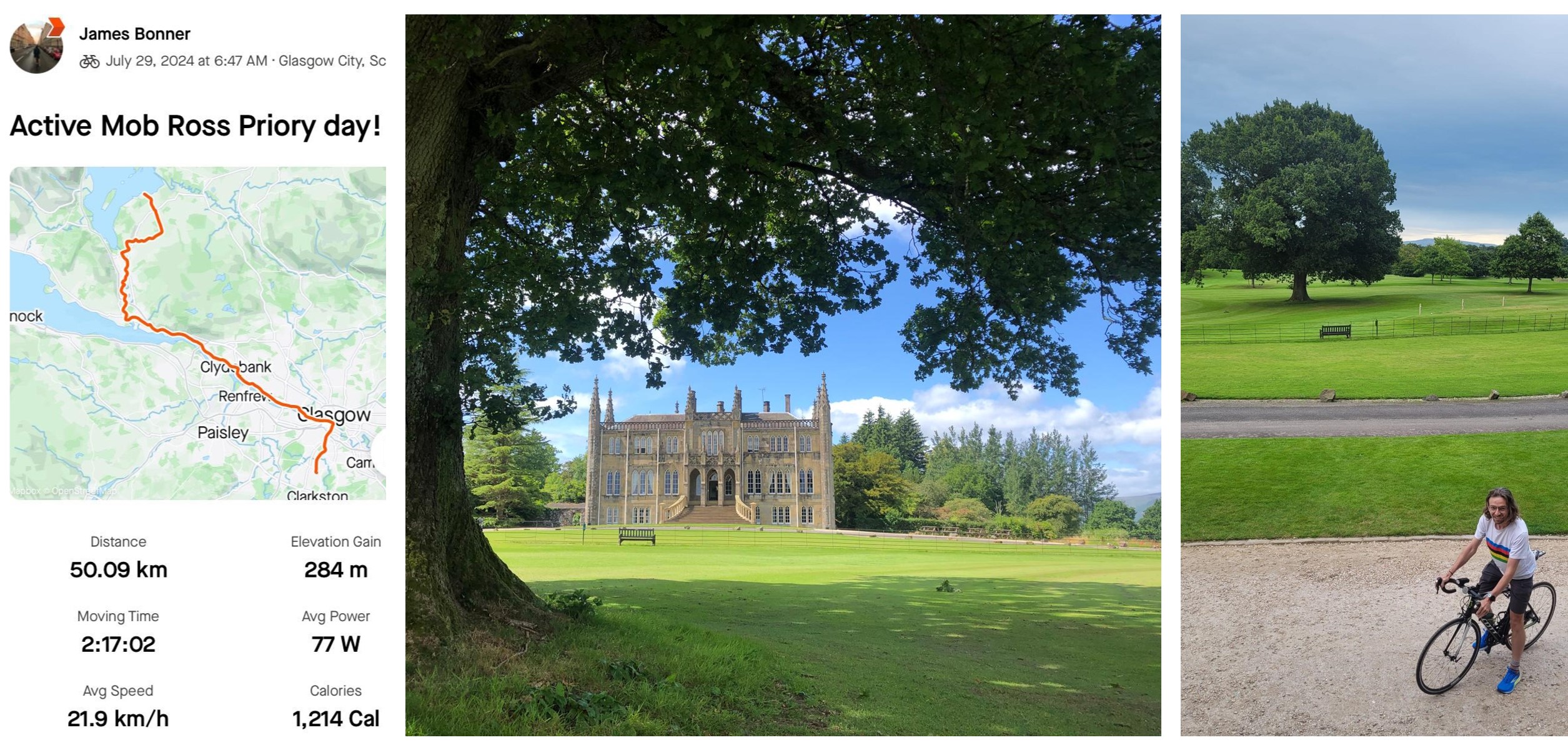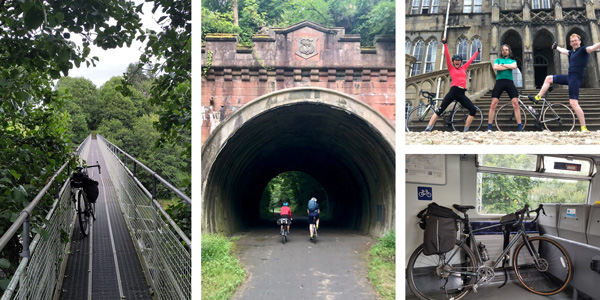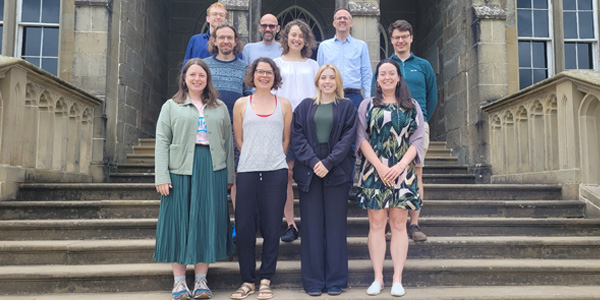
Slow Travel in Practice
We introduced the University’s Active Mobility Hub in the SDGs in Action: Strathclyde’s Active Mobility Hub blog. In this follow-up blog, the Hub members describe ways they have recently integrated sustainable mobility practices into their research at the University’s Ross Priory north of Glasgow, and undertaking fieldwork and conference attendance in the Netherlands and Belgium. In terms of the travel modes used, they sought to apply slow travel principles of 'taking time' to get to know places as they moved through them.
Research Culture Away Day at Ross Priory
The University’s Ross Priory, 40km north of Glasgow, is a place away from the bustle of the city for events and conferences. On 29 July 2024 we organised an event there to reflect and review themes of research culture in the work we have been undertaking at the Active Mobility Hub. This was funded by and aligns with the UKRI’s research culture report, highlighting the importance of research culture as critical to good research. We thought this was an ideal opportunity to ‘walk the walk’ (or 'cycle the cycle'), and collectively seek ways to travel to, and from, the location by different forms of transport.
A few Hub members gathered to travel together in one of the university's fleet of electric cars, allowing them to travel directly to the venue from Glasgow by car.
Some of us took the train to the nearby village of Balloch, just 8km away then cycled onwards towards Ross Priory, or took the local bus service.
Three members managed to cycle from Glasgow’s southside to meet the rest of the group. This journey of 50km took approximately two and a half hours and was made more comfortable by Ross Priory having showering facilities, a kit storage area and a drying cabinet for wet clothes.

Collage depicting James’ route cycling to Ross Priory on Strava, and photographs of some of the grounds. Images: Deirdre Harrington and James Bonner
Reflections On Our Journeys to Ross Priory
Each mode of travel brings its challenges, and knowing these can be helpful for anyone thinking about travelling to Ross Priory using more sustainable modes. The active and sustainable travel modes we used certainly required more time, energy, and effort in planning, coordinating, and doing it.
These reflections provide some insight and specific advice for anyone wanting to look beyond private car travel to Ross Priory.
Cycling from Glasgow:
- Take National Cycle Network (NCN) route 75 and then 7 west from Glasgow, following close to the River Clyde towards Dumbarton, before heading north to Balloch. Then follow signs east on the route, before finding your way to Ross Priory. Learn more about Cycling at Ross Priory.
Train and bike combination:
- Take the train to Balloch (or, if you prefer, one of the many stations on the way. See Scotrail's route mapping for information). Then join the cycle route as mentioned above to cycle the 8km to Ross Priory.

Photo collage of travel to Ross Priory by different participants. Images: various Hub members, compiled by James Bonner
Train and bus:
- Take the train to Balloch, then a local bus and get off at Gartocharn Primary School. See local buses timetables. It’s a 1-2 km walk along the beautiful entrance to Ross Priory or organise a lift from staff at Ross Priory, who can come to pick you up in one of their electric vehicles!
Carpool in an Electric Vehicle:
- The University has a fleet of hireable electric vehicles, which can be rented by registered members of the University. There are EV charging points at Ross Priory. Learn more on how to use the University's electric vehicles.

Active Mobility Hub at Ross Priory for a research culture away day. Image: Deirdre Harrington
From the Rhins to the Rhine — The Active Mobility Hub in the Netherlands and Belgium
One of the projects we have been developing at the Active Mobility Hub is a comparative study of two long distance cycle routes — the newly formed Kirkpatrick Way in southern Scotland and the ‘Euro Velo 15’ route that follows the Rhine river in Netherlands, Germany and Switzerland, and their impact and value in the places they pass through.
In June 2024, two of us travelled to the Netherlands and Belgium using a combination of cycling, ferry, and trains to collate content for case studies on ways cycling is integrated with other mobility practices in countries in or near the river. We also attend several meetings and an international conference to network, explore, and learn from, key topics related to our work.
A (very) brief overview of the trip from James
Boarding a train in Glasgow with our laden bikes — from laptops to conference clothes; tools to fix our bikes, to cycling kit (I even packed my kilt to overlap with Scotland’s participation in the Euro football championships in Germany) — we travelled to Newcastle to catch an overnight ferry to the port of Ijmuiden near Amsterdam in the Netherlands.
After a week of cycling, and some trains, we managed visits to Delft and Rotterdam before travelling south to Belgium and the city of Gent to attend the 3-day Velocity conference.
I also spent the weekend cycling east along the Euro Velo route 15 from its starting point at the North Sea close to the Dutch city of Rotterdam in a journey towards Germany.
Reasons and reflections on using ‘slow travel’ from James and Deirdre
Travelling using a combination of ferries, trains and cycling aligns with the university’s travel policy to reduce air travel. Undertaking a project about cycling, having our bikes was a critical part of the experience, while we also wanted to highlight the lack of passenger ferry to mainland Europe from Scotland (we travelled from Newcastle to the Netherlands).
The capacity to be flexible, and meet people in person, had significant benefits to building relationships, evident in our visit to University of Amsterdam

Some excerpts from the digital scrapbook we have made of our experiences. Images: James Bonner and Deirdre Harrington.
Sustainable/ Slow Travel Moving Forward
Incorporating sustainable/ slow travel into how we undertake professional travel at the University, and in general, is a way of integrating requirements to reduce the carbon impact of how we move. There are a lot of benefits to doing so, and it is also fun.
However, it can be more time-consuming and tiring in both the planning and doing — this will potentially need new forms of support from, for example, line managers, travel bookers and even funders.
Are you interested in following more about the Active Mobility Hub's experiences of integrating slow and sustainable travel into their professional travel and research practices?
Perhaps you have a story of your own, or would like to ask the Hub a question? Get in touch with James or Deirdre.